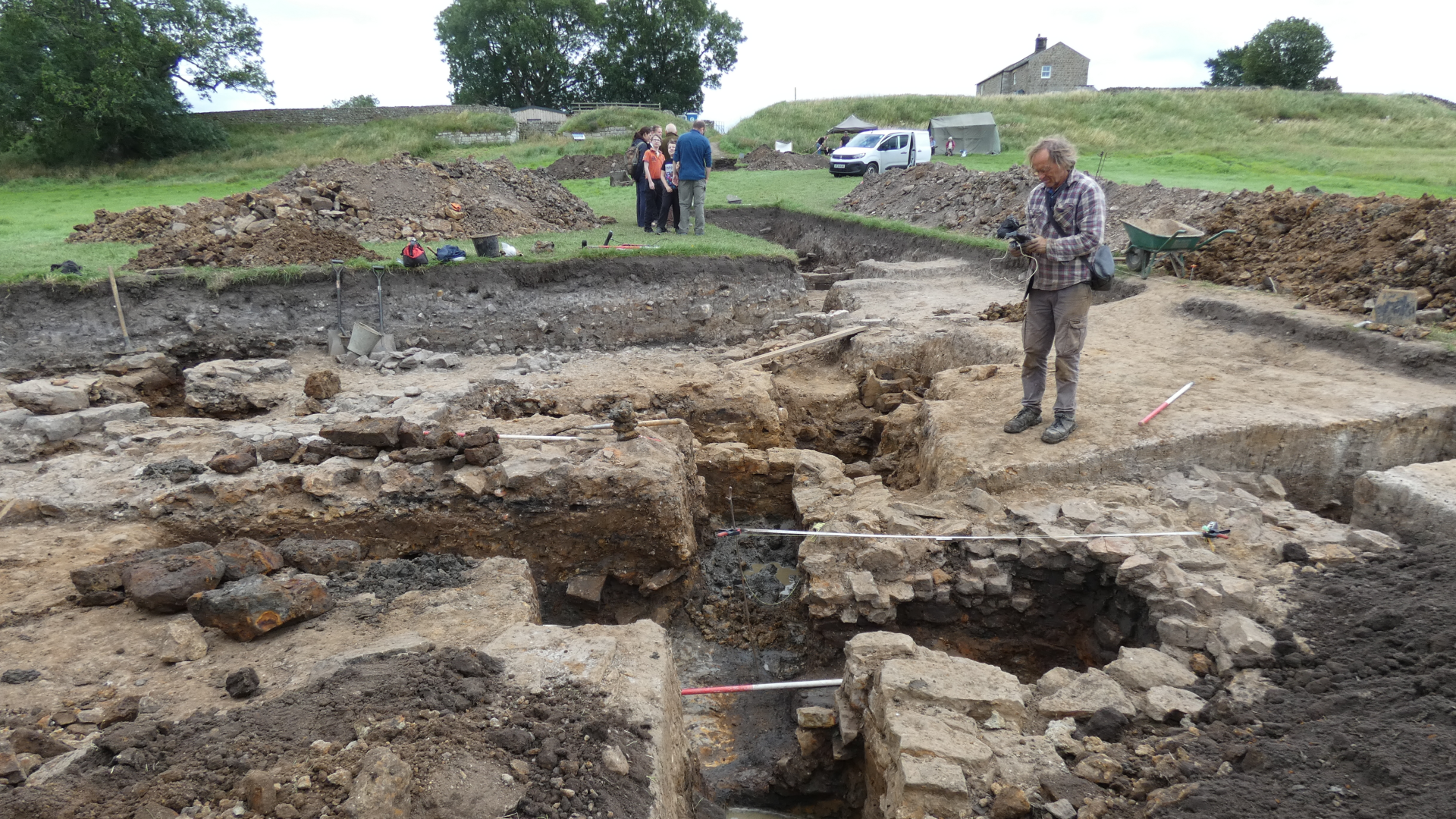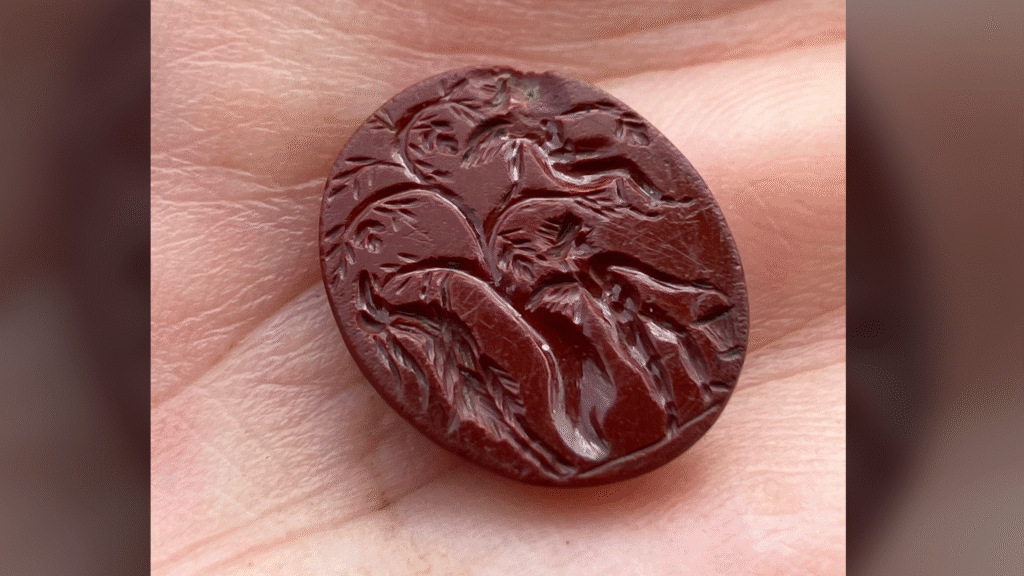Excavations at a Roman fort in Britain north of Hadrian’s Wall have revealed a unique carved jewel depicting a grape harvest scene from Roman mythology. This is rarely found in northern Europe.
The red stone was originally set in a sealet ring and was likely used by the Romans as a personal communication marker, Bob Jackson of the Redsdale Archaeological Group, who has supervised multiple excavations at the site, said in a statement. Richard Carleton, an archaeologist at Newcastle University and director of the excavation, said in a statement that the design “is believed to be unique in Britain and Scandinavia”.
you may like
From 2021 onwards, archaeological excavations will focus on the outer structure of the main fort, which was built and rebuilt several times between the late 1st and 3rd centuries. Researchers also discovered a rare lime kiln during previous excavations at Bremenium. It is thought to have been used to produce quicklime, the basis for mortar, plaster, and concrete, for the construction of fortress ramparts, or defensive walls.
“The 2025 results add to the previous year’s results by confirming the presence of an inner enclosure wall,” Carlton said. “Many pottery and other items indicate that the original building was filled in with later buildings and garden surfaces, probably in the 3rd century.”

Artifacts discovered this year also include examples of Roman pottery from across the Empire, including an amphora, or clay jug, made in northern Spain to transport olive oil to Bremenium, the statement said. Archaeologists also found lead sling bullets, votive oil lamps, lead seals for official documents, several brooches, and two pieces of carved jewelry known as intaglios, which were part of Roman soldiers’ equipment.
A large intaglio depicts two winged cupid figures plucking grapes from a tree. Next to it is a goat-like creature stretching out on its hind legs. Carleton said the rare intaglio is rare in Northern Europe, but similar to those found in northern Italy and Croatia.
“This jewelery is likely to reflect the origin of the wearer, who may be of Mediterranean origin,” Carlton told the BBC.
“This year’s discoveries have been exceptional in both quantity and quality,” Jackson said. “A variety of pottery and metalwork, particularly amphorae and intact brooches, provide new insights into trade, craftsmanship and daily life in Bremenium.”
Researchers plan to return to Bremenium next year to further excavate the fort.
Editor’s note: This article was updated on Nov. 7 at 12:15 p.m. ET to correct the word “northeast” in the quote to “north.”
Roman Britain Quiz: What do you know about the Empire’s conquest of the British Isles?
Source link

